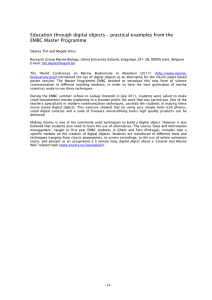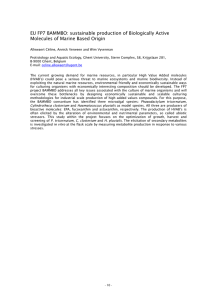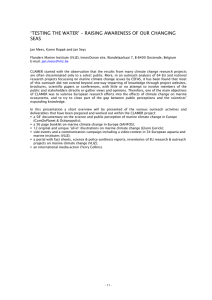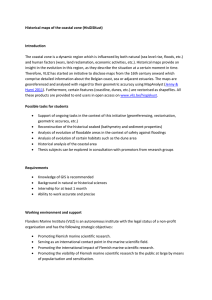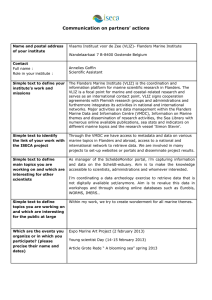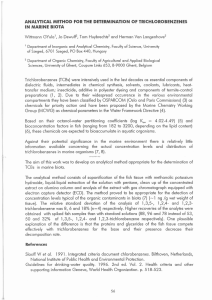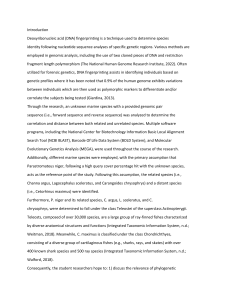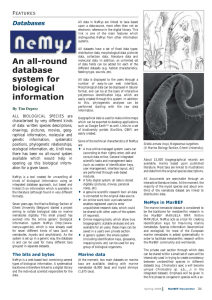NemasLan, MysidLan, TaxonLan: a story of database development
advertisement
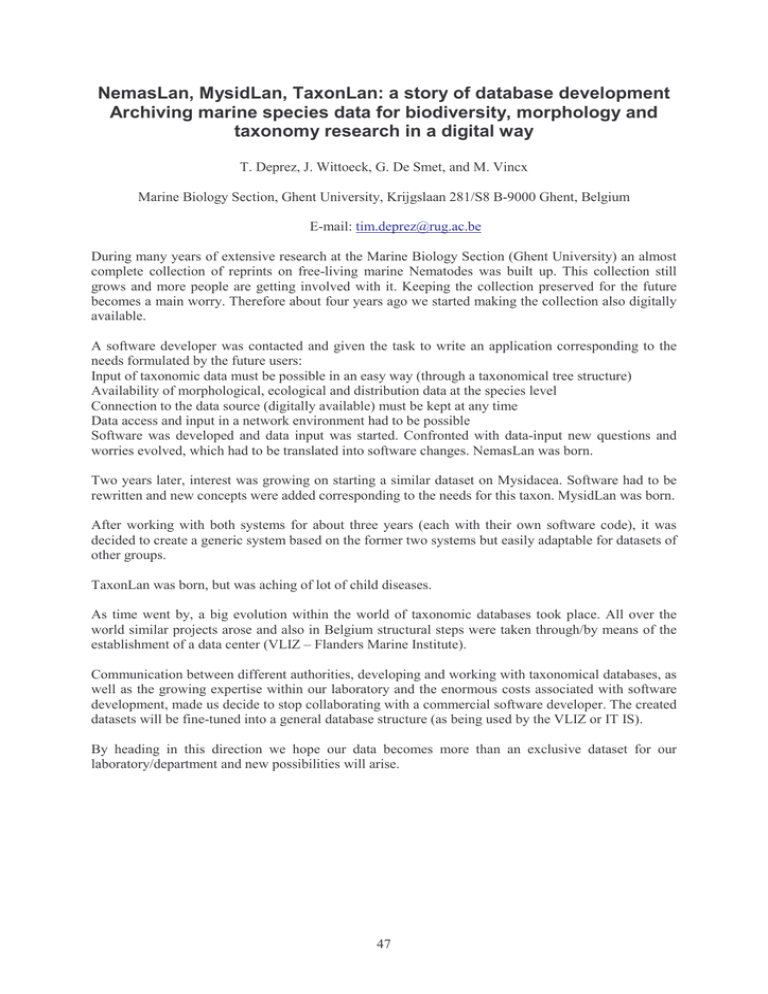
NemasLan, MysidLan, TaxonLan: a story of database development Archiving marine species data for biodiversity, morphology and taxonomy research in a digital way T. Deprez, J. Wittoeck, G. De Smet, and M. Vincx Marine Biology Section, Ghent University, Krijgslaan 281/S8 B-9000 Ghent, Belgium E-mail: tim.deprez@rug.ac.be During many years of extensive research at the Marine Biology Section (Ghent University) an almost complete collection of reprints on free-living marine Nematodes was built up. This collection still grows and more people are getting involved with it. Keeping the collection preserved for the future becomes a main worry. Therefore about four years ago we started making the collection also digitally available. A software developer was contacted and given the task to write an application corresponding to the needs formulated by the future users: Input of taxonomic data must be possible in an easy way (through a taxonomical tree structure) Availability of morphological, ecological and distribution data at the species level Connection to the data source (digitally available) must be kept at any time Data access and input in a network environment had to be possible Software was developed and data input was started. Confronted with data-input new questions and worries evolved, which had to be translated into software changes. NemasLan was born. Two years later, interest was growing on starting a similar dataset on Mysidacea. Software had to be rewritten and new concepts were added corresponding to the needs for this taxon. MysidLan was born. After working with both systems for about three years (each with their own software code), it was decided to create a generic system based on the former two systems but easily adaptable for datasets of other groups. TaxonLan was born, but was aching of lot of child diseases. As time went by, a big evolution within the world of taxonomic databases took place. All over the world similar projects arose and also in Belgium structural steps were taken through/by means of the establishment of a data center (VLIZ – Flanders Marine Institute). Communication between different authorities, developing and working with taxonomical databases, as well as the growing expertise within our laboratory and the enormous costs associated with software development, made us decide to stop collaborating with a commercial software developer. The created datasets will be fine-tuned into a general database structure (as being used by the VLIZ or IT IS). By heading in this direction we hope our data becomes more than an exclusive dataset for our laboratory/department and new possibilities will arise. 47

